Menu

THE BLACKSMITH
RYUSEN HAMONO
- Choosing a selection results in a full page refresh.
















Usually ready in 1 hour
| Blade Length | 175 mm |
| Total Length | 330 mm |
| Steel | SPG STRIX |
| Handle | Stabilized Poplar |
| Ferrule | N/A |
| Rockwell | 65 |
| Height Spine to heel | 47 mm |
| Width at Spine | 2.03 mm |
| Weight | 140 grams |
| Bevel | Double (50/50) |
Ryusen Hamono
Ryusen Hamono is another fantastic maker working out of their shop in Echizen City, Fukui Prefecture, Japan. They fully embrace the tradition of the region and take great pride in every step of the knife making process. They produce knives with excellent fit & finish, and sharpness that are absolutely beautiful to look at and hold. Winners of numerous design awards and supporters of the Japanese national team at the Bocuse D'or their knives are popular with professional chefs and home cooks alike.
Ryusen Hamono works primarily with SG2/R2, a high powder stainless steel that is very hard and grinds super thin behind the edge. The blades generally have a shorter blade height, which makes them great for precise slicing tasks. Their profiles vary quite a bit, from aggressive sweeping k-tips to more traditional yet modern gyuto shapes. The blades are very consistent, as they employ both modern and traditional techniques, each blade is hand sharpened and impeccably sharp out of the box. Every handle has a unique pattern, particularly the Blazen line, which has a distinctly comfortable taper, compared to the Tanganryu line, which is a hybrid western micarta handle, also with a smooth finish.
From the Ryusen Hamono Website...
The Nakiri is designed to be used as a vegetable chopping knife. It's flat blade profile means that the majority of the blade contacts the cutting board when using an up and down chopping motion which helps prevent those "stuck together-vegetable accordion" things from occurring. They also feature a nice tall blade which provides tons of travel for your guide hand when using that up and down chopping motion. They should not be confused with a meat cleaver and should never be used to cut through bones.
Follow these care recommendations for your Japanese knives to protect the edge and keep them sharp as long as possible:
All products are shipped within 24 hours. We offer same day shipping for products ordered by 12pm. Please allow 4-7 business days for your shipment to arrive with standard shipping. Expedited shipping options are also available at checkout.
We offer free shipping on orders within Canada over $150 CAD and free shipping on orders to the US over $200 USD.
Curbside pick-up is available at both our Hamilton and Etobicoke locations.
To make sure our customers are always satisfied, we offer full refunds on products for 14 days after receiving them. See our full return policy for details.
More questions? Check out our shipping policy, our return policy, or reach out to us directly.
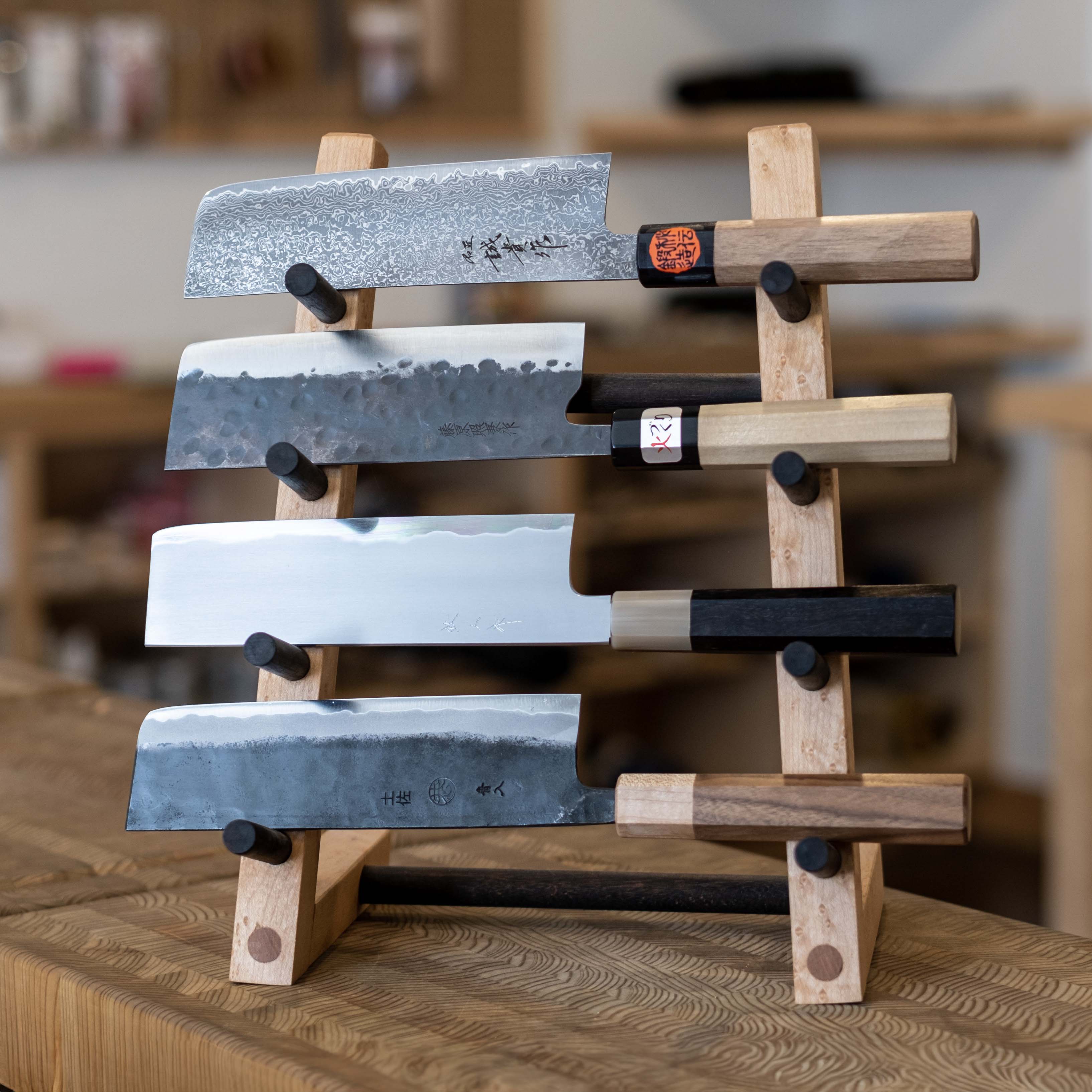
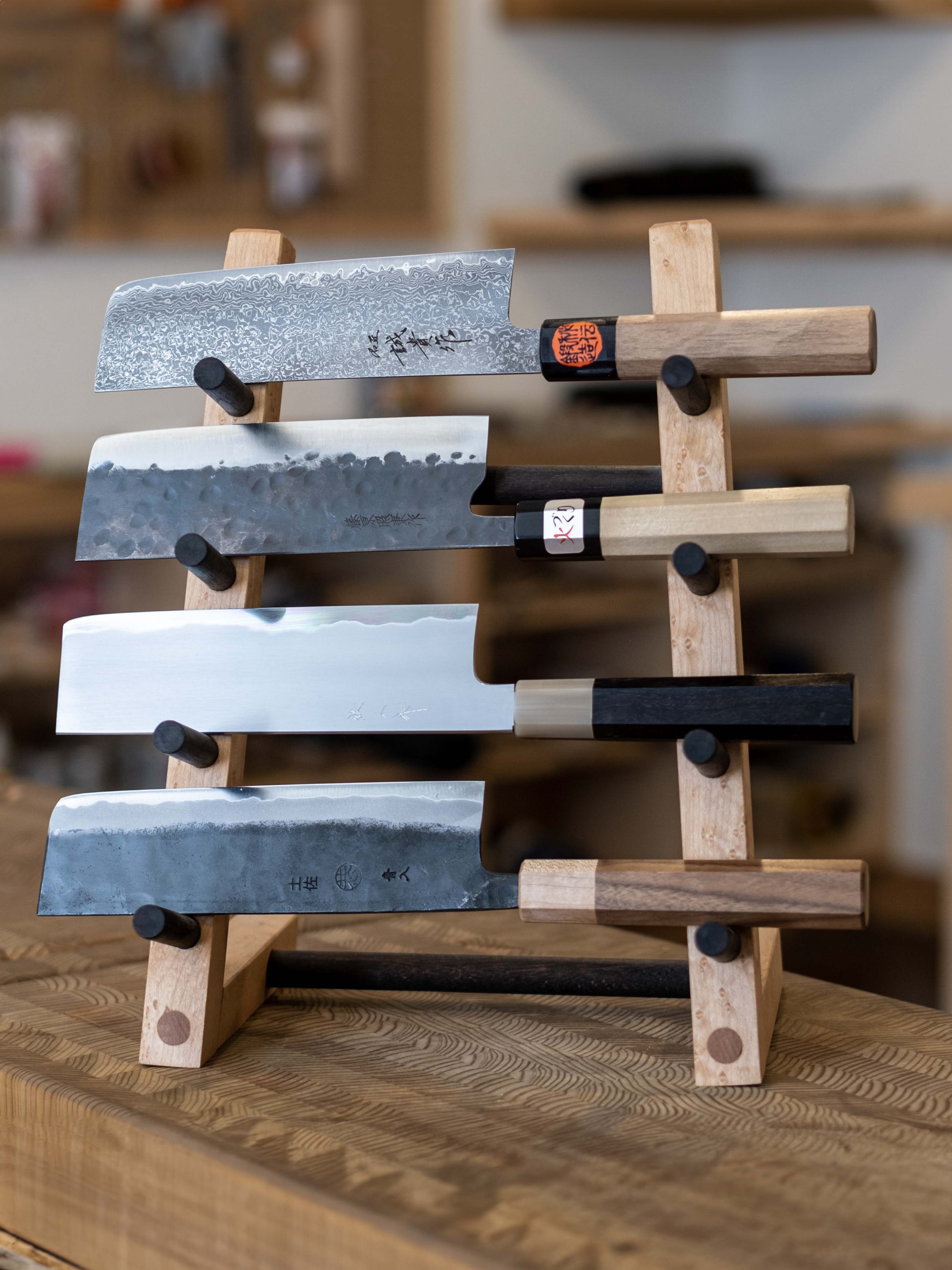
The Nakiri is designed for vegetable chopping. It has a flat profile (less curved blade) that helps the knife make consistent contact with the cutting board when using an up and down chopping motion, helping to avoid pesky accordions of stuck together ingredients. Any well rounded kit should contain a Nakiri, but if this is your first knife you might consider a Gyuto, Santoku or Bunka, as their pointed tips makes them more versatile.
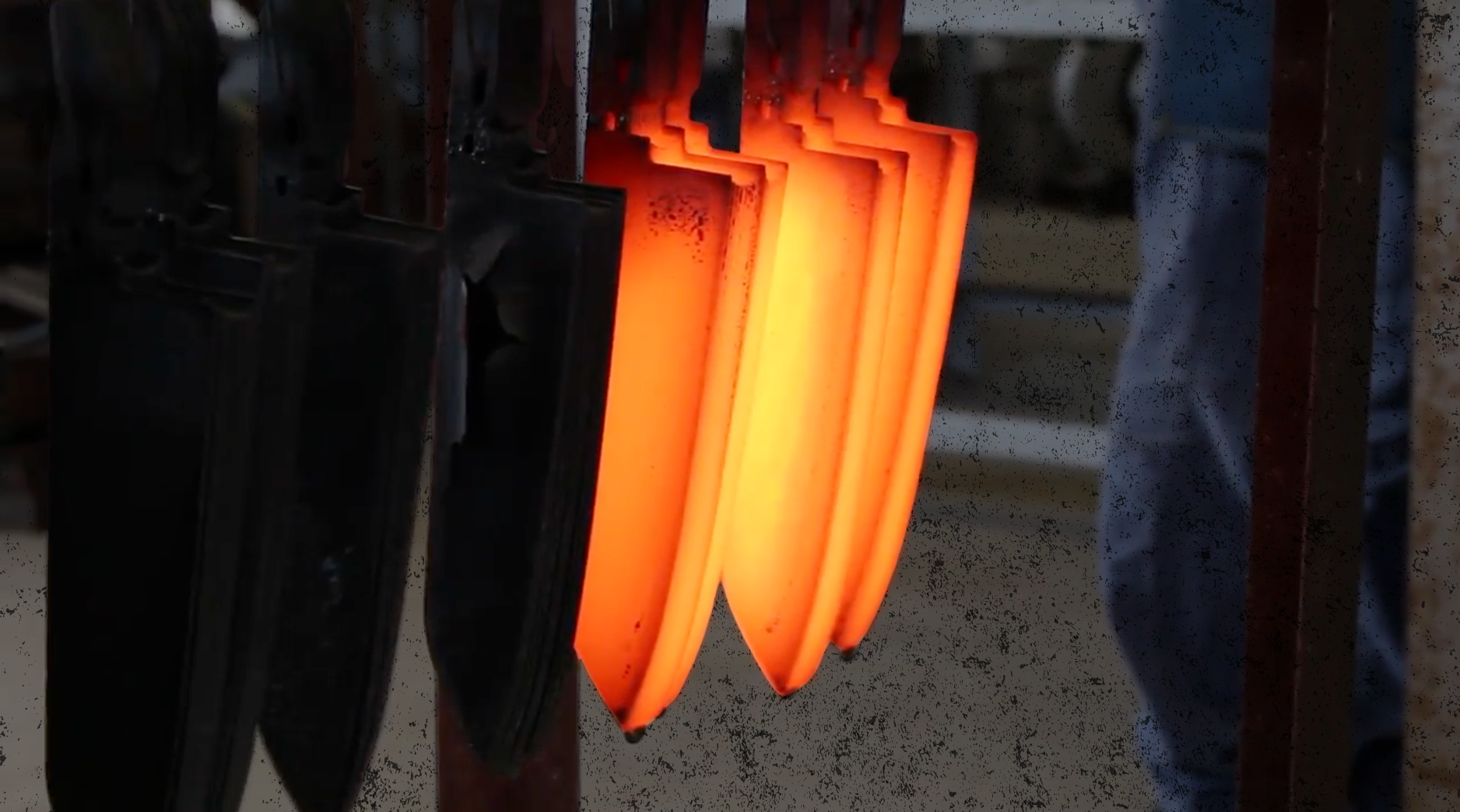
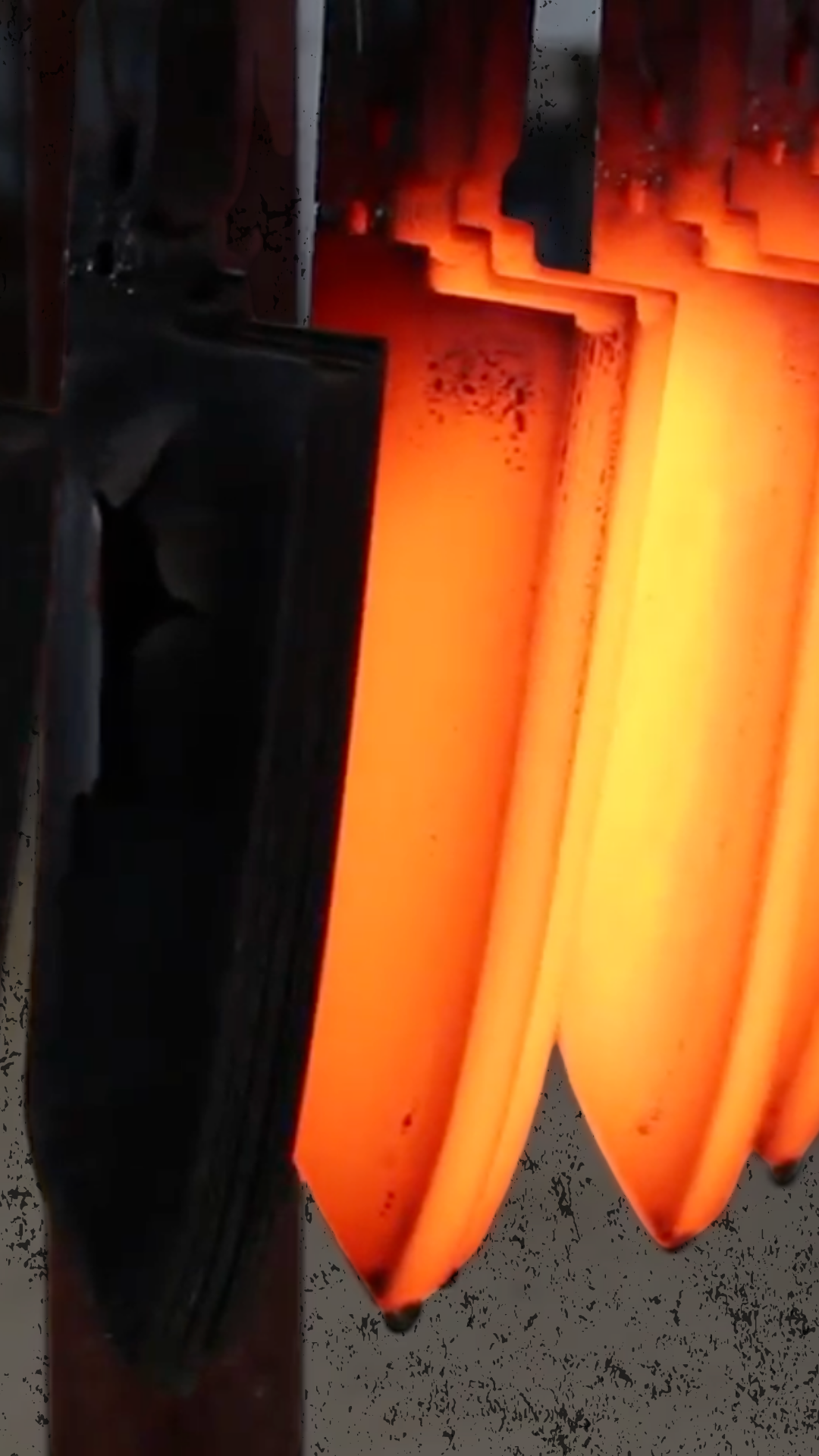
R2 and SG2 are technically different steel types, but are so similar we and many other retailers lump them into the same category. They are what’s known as a “quick powdered” stainless tool steel with incredible edge retention and corrosion resistance. Their one drawback is that their hardness can make them difficult to sharpen. It is not a steel we would recommend for those planning to thin and polish the bevels of their knives unless they are equipped with the proper tools (you will need a low grit stone in the #200 grit range).
Chemical Composition:
C 1.25-1.45% | Cr 14.0-16.0% | Mo 2.3-3.3% | V 1.8-2.2%
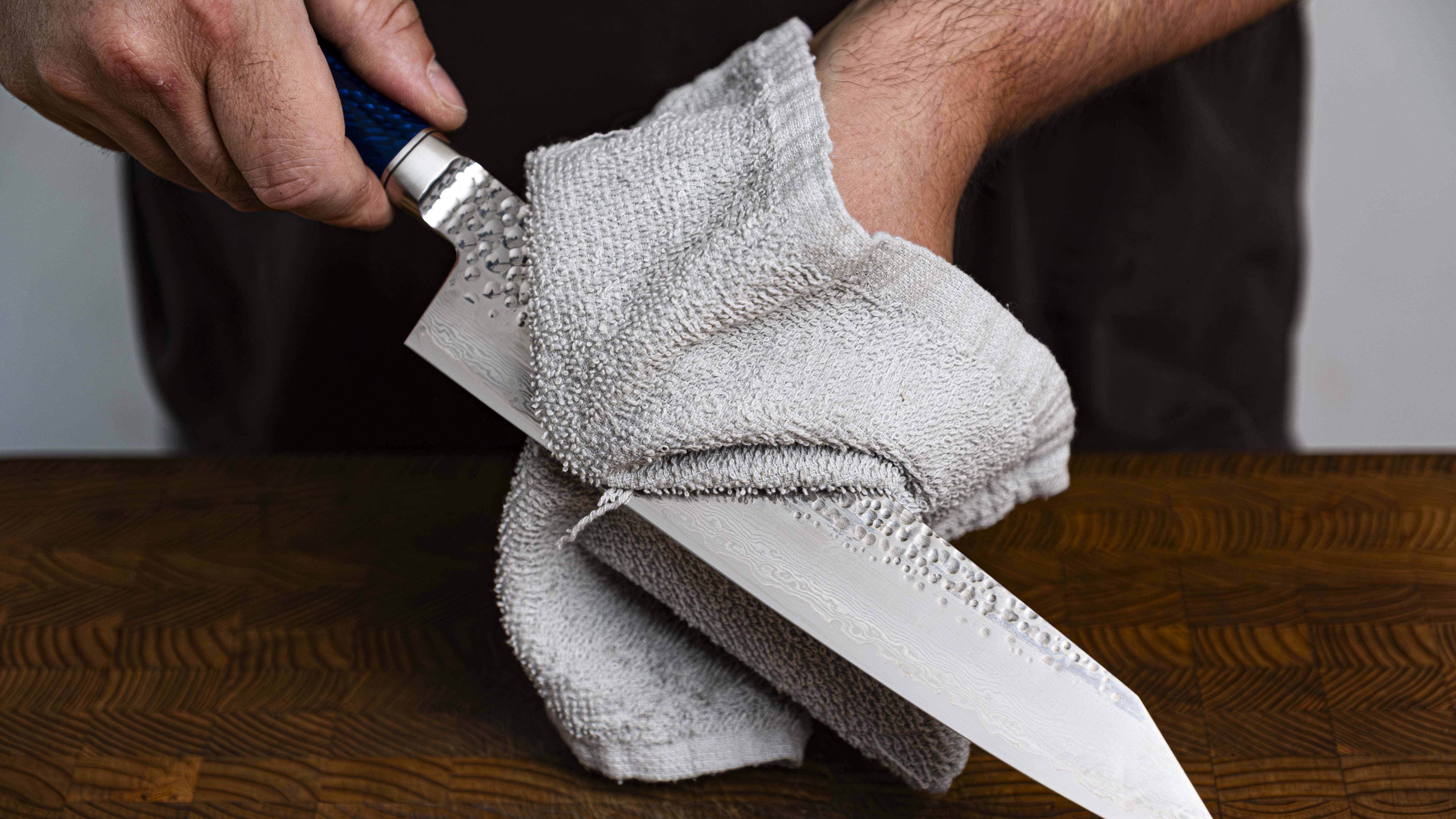
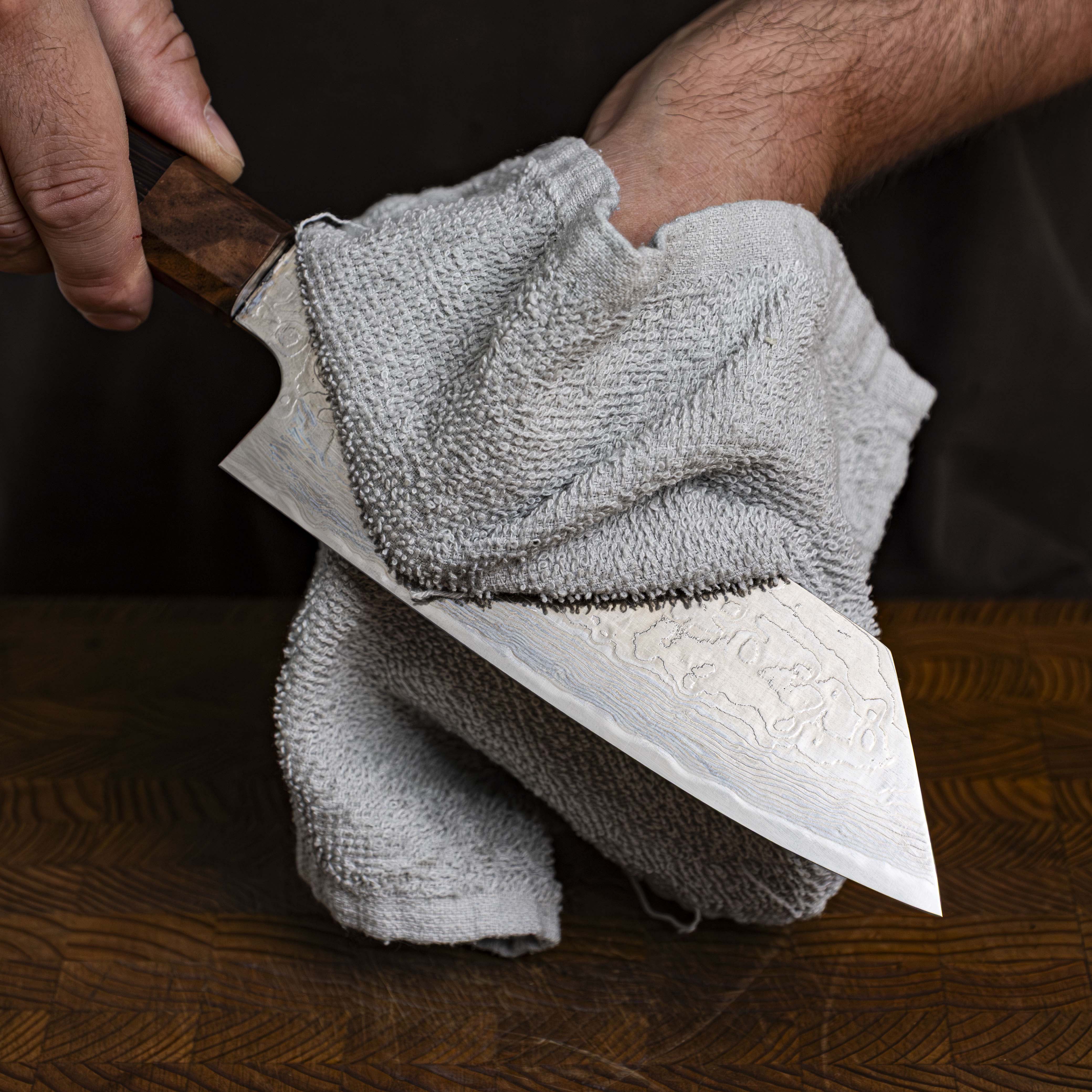
LOW MAINTENANCE
Stainless steel Japanese knives are made in a process called “Sanmai” or “Forge welding” where two softer layers of stainless steel are laminated around a harder core layer of stainless steel. All three of these layers are rust resistant and therefore are not susceptible to rust or discoloration. The softer outer layers of steel are used to make the knife more durable and flexible while the harder core layer is used to provide better edge retention to the blade.

Ryusen Hamono is a maker working out of Echizen City, Fukui Prefecture, Japan. They fully embrace the tradition of the region and take great pride in every step of the knife making process. They produce knives with both modern and traditional techniques, creating excellent finishes that are beautiful and comfortable to hold. Each blade is hand sharpened to be impeccable straight out of the box. Winners of numerous design awards and supporters of the Japanese national team at the Bocuse D'or, their knives are popular with professional chefs and home cooks alike.
